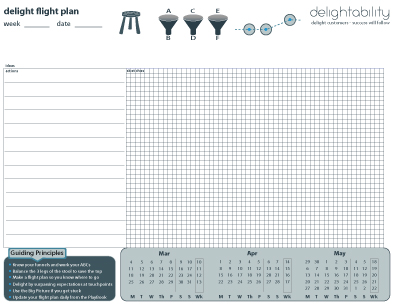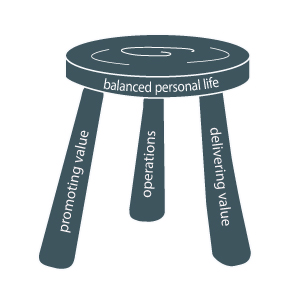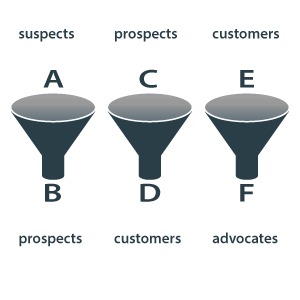What, why do I need a flight plan you say? Because more than half of the pilots involved in mishaps did not file a flight plan before the accident flight. You might not fly a small aircraft but, if you are a small business owner or entrepreneur, you need the equivalent of a flight plan too. Otherwise you may be an accident waiting to happen.
Flight plans for small craft pilots are filed with the FAA so there is a record of where the pilot intends to go. If the pilot doesn’t arrive within a window of time then a search is initiated. The lack of a flight plan has led pilots and their craft to go missing for days. If you want the benefits of a search and rescue party, you’ll need to file a flight plan.
So what does this have to do with running a small business? Well, you too, should be prepared and know where you are going each and every day. How long will you fritter about before you get down to business? Will you be distracted by social media, the next phone call, the insurmountable email inbox? If you are an emergency room doctor or a first responder your plan might be to respond and react. But, if you are an entrepreneur or small business owner wanting to grow your business, you’ll need to cut through the noise and be more proactive. You’ll also want to identify the people that can help you – your small business search and rescue; these might be customers, partners, or vendors.
Like most entrepreneurs and small business owners, you likely have a long list of things that get shoved off to the back burner waiting for another day when there is more time. But more time never actually does come right?
Today is no different than yesterday and tomorrow will look much the same. You only have 24 hours in a day. When it comes to time, there is no aristocracy of wealth. Genius or laziness is not rewarded or punished with any more time.
So, to make the most of what little time you have you must make a daily plan. At Delightability, I use the daily flight plan. It’s a free download; you can use it too.
The 3 Legged Stool
There are a few visual indicators at the top of the flight plan that serve as reminders. The first is the 3 legged stool. Any small business owner struggles with balancing between running a smooth operation, delivering on whatever their product or service is, and performing the sales/marketing/business development function. Even if you are good at all three, you’ll struggle with the limited time available in a day. With the 3 legs being all consuming there isn’t much time for personal life – that should be you sitting atop the well balanced 3 legged stool. But, get out of balance and you and your personal life topple to the floor.
The 3 Funnels
The 3 funnels visual is a reminder that no matter what business we’re in we have customers to serve. Those customers didn’t start out as customers, they started out as prospects. And hopefully, they’ll move beyond being customers to become loyal advocates. So, the 3 funnels are the exposure funnel where you turn suspects into prospects, the adoption funnel where you turn prospects into customers that are using your product or service, and the retention funnel where you turn customers into loyal advocates. For a bit more read this previous post.
Touchpoints
The other visual reminder are touchpoints reminding us that we can affect the quality of the interactions that our customers have with us. Exceed the customer expectation at a touchpoint and you have the recipe for delight. Check out the previous issue of the What’s Next newsletter to learn more about the Delight-O-Meter model and see a couple of examples.
Week Numbers
Other items on the daily flight plan that can help you get about your business are the weekly calendar that goes 3 months at a time and the Guiding Principles. You don’t want your business to end up like the small craft pilot that landed with his gear up. So, download your flight plan, use it daily, and check it frequently. Use it to note the people you’ll reach out to whether they are customers or consultants. You might not get any more time in the day but you’ll make the most of the time you have available and make a bigger impact along the way.
Book Project Update

The Experience Design BLUEPRINT is now available. The first section of the book is about making the invisible visible. You’ll learn about the experience honeycomb, experience hoop and halo, and how to model experiences, whether those are for customers, employees, voters, members, investors, patients, clients, etc. You will build a rich experience vocabulary that is relevant to your audience and to your organization’s health. You’ll learn from everyday consumer examples and then learn how to apply filters, lenses, and levers to improve experiences of any type.
In the second section of the book, you’ll learn to visualize your promise delivery system, better navigate change, and improve your skills in overcoming the barriers that plague innovations and customer experience improvement initiatives. Click here or the image to download the one page book summary along with author contact information. Please reach out if you’d like some help.









